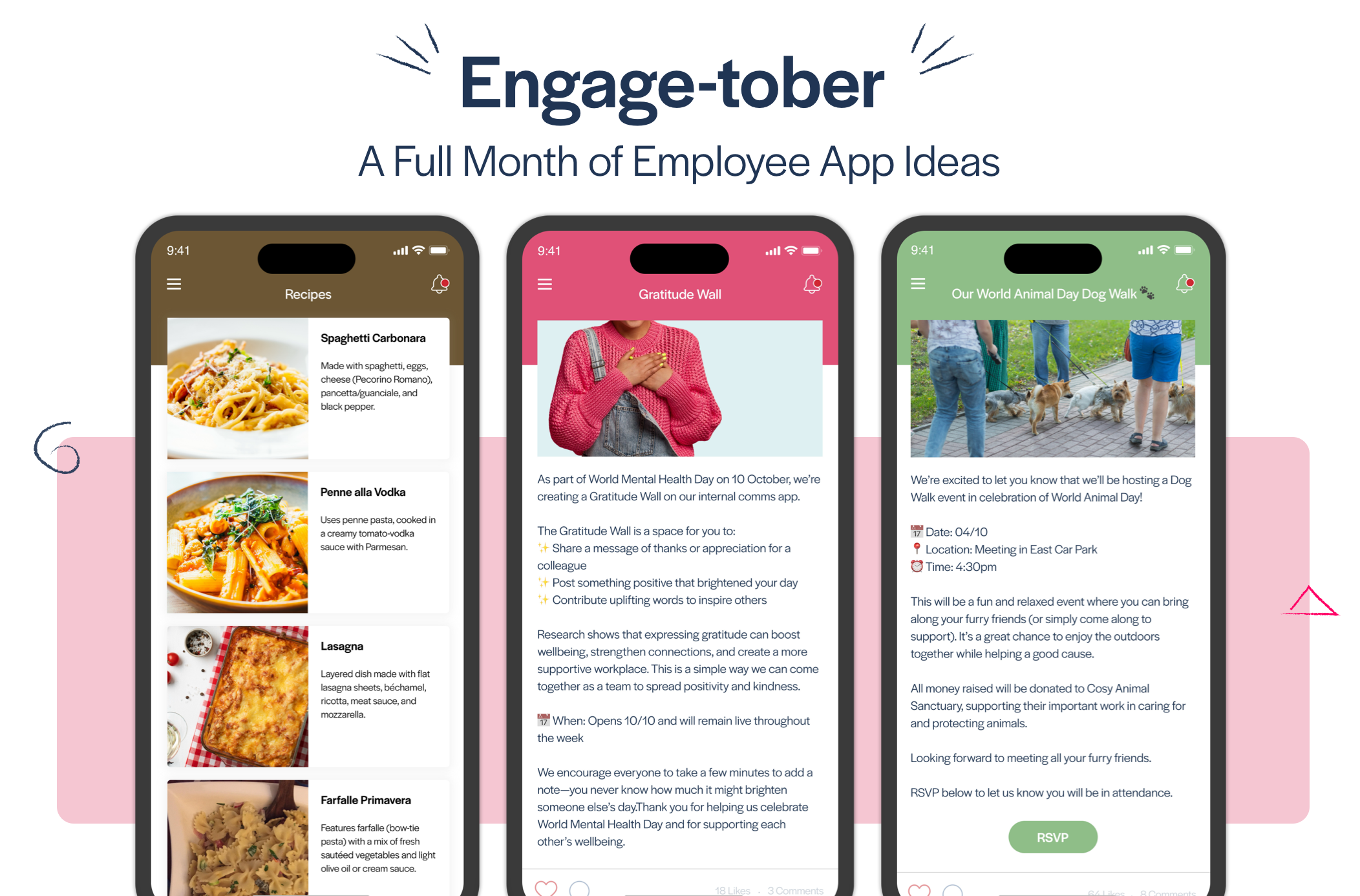
Blog
What Does Employee App Success Actually Look Like?
Not sure how to measure the success of your employee app? Here's how to define your success criteria and measure against them.

After our previous blog post on measuring the success of an employee app, we’ve been asked by some of our customers for advice on how to decide which aspects of their apps are worth measuring and which aren’t.
In point 1 of that blog (be clear about what you want to measure, and why) we said:
“You should have a clear rationale for each measurement you make, record and report on, and that links back to the reason that the organisation wanted an app in the first place. Your organisation likely had some clear reasons for wanting an app – so the stats that you’re measuring should be with the purpose of comparing the performance of the app against the reasons for the app existing.”
Think About The Purpose of Your App
To decide what your success criteria are going to be, you need to reflect on the reasons you had for introducing the app to your organisation. These reasons usually fall into two categories:
Business Objectives: Goals that your department (Internal Comms for example) or the wider business have.
Employee Insights: Bits of feedback that you’ve collected from employees about issues they have with the business, or problems they would like a solution for.
Those might look something like this, for example:

Selecting Your App Success Metrics
When you understand what those business objectives and employee insights are, then you need to take the ones that are relevant to or addressable by an employee app and use them as the basis for your success criteria. In a nutshell, you’re asking:
-
- Is the app contributing to making progress towards this objective? If yes, to what extent?
- Is the app contributing to addressing the feedback that we received from employees? If yes, to what extent?
Those are your success criteria, and to find out the answer to those questions, for each objective or employee insight, the best way to do that is lay it out like so:
- What’s the business objective or employee insight?
- What actions did we take in the app this week/month/quarter to advance that?
- How successful was that content in the app?
- What impact did that content have?
For information on how ‘success’ and ‘impact’ are different, and how to measure each of those, check out our previous blog post on Measuring Employee App Success.
When you do that, you’ll have something that looks like this:

Tie Your Metrics to Your Business Goals
And that’s really all there is to it! We can’t really tell you how many weekly users you should be happy with, or how many comments is ‘normal’ to get on a news post in your app. Your success metrics should be based on the contribution that your app is making towards these business objectives and employee insights/feedback.
Your Client Success Manager can give you advice and show you examples of the types of actions that are likely to contribute towards certain types of objectives and pieces of feedback you’ve received from employees. But as you can see above, your success criteria should be based on these business objectives and employee insights. If you don’t know what those are, spend some time reflecting on why your organisation wanted an employee app in the first place and talk to senior stakeholders within your organisation to uncover those objectives that can be served by an employee app.
If you can demonstrate that your app is making a positive impact or contribution towards key business objectives, and to solving problems raised by employees, then that’s what ‘success’ looks like!
Written by: Ian McCutcheon, Client Success Manager at Thrive.App










